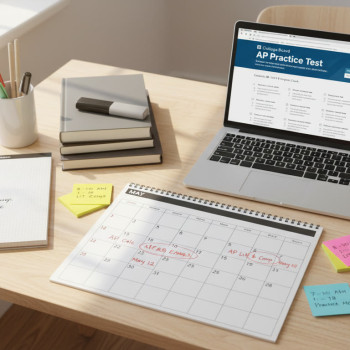AP vs SAT: Cambridge IGCSE/A Levels Complement or Redundancy?
Opening note: why this comparison matters
If you or your child is balancing Cambridge IGCSE/A Levels with AP courses and the Digital SAT, you re not alone in feeling a little overwhelmed. These qualifications and exams each have their own language, timelines, and expectations. Many families ask: are APs and the SAT just repeating what A Levels already test, or do they add something meaningful to a student s academic profile?
This article speaks directly to students and parents navigating those choices. We ll unpack how each assessment works, how they line up with Cambridge IGCSE and A Levels, and practical pathways to decide what s best for your goals. Along the way I ll offer concrete examples, a comparison table, and study-savvy tips plus where targeted support like Sparkl s personalized tutoring can fit naturally into your plan.

Quick primer: what each credential tests and why it exists
Cambridge IGCSE and A Levels (brief)
IGCSEs are typically taken at age 14 16 and measure subject knowledge and skills across many disciplines; they re broad and curriculum-linked. A Levels (usually taken at 16 18) are deep dives: one to three years of focused study in a few subjects, emphasizing depth, critical thinking, and evidence-based argument skills universities worldwide recognize for readiness to study at the tertiary level.
AP (Advanced Placement)
AP exams (often taken alongside AP courses) are subject-specific college-level tests. They demonstrate an ability to take on more rigorous study and, in many contexts, can earn university credit or advanced placement. APs are modular: students choose which subjects to challenge, from Calculus and Biology to European History and Computer Science.
Digital SAT
The Digital SAT measures college readiness in math and evidence-based reading and writing on a standardized scale. Unlike subject-specific exams, it s a college-admissions test meant to provide a common metric for comparing applicants from diverse curricula and countries. The Digital SAT emphasizes clear problem-solving, data interpretation, and close reading.
How they align: skills, content, and assessment style
Skill overlap and differences
- Critical thinking and analysis: Present in A Levels, APs, and the SAT though A Levels and APs test deeper disciplinary reasoning, while the SAT focuses on transferable analytical skills under timed, standardized conditions.
- Subject depth: A Levels and many APs go deep into subject matter; SAT does not test subject depth beyond general math and textual reasoning.
- Exam style: A Levels often include essays, long-form problem-solving, and sustained coursework; APs mix multiple choice and free-response; SAT is primarily multiple-choice and short constructed responses in a timed, adaptive digital format.
How Cambridge qualifications prepare you for APs and the SAT
IGCSEs build foundational knowledge and study habits research skills, note-taking, and exam technique that feed naturally into A Levels, APs, and SAT prep. A Levels focus on depth, analysis, and independent study parallels AP expectations and can make certain APs feel familiar. In short: an A Level student who has strong subject mastery often steps into AP courses with confidence, and the analytical habits formed for A Levels transfer well to the SAT s reasoning tasks.
Are AP and SAT redundant if you re already doing IGCSEs/A Levels?
The short answer
No rarely. They can overlap in skills and content, but they serve different strategic and practical roles depending on your goals.
When APs add value
- University credit or placement some US colleges award credit for high AP scores, potentially saving time and tuition.
- Demonstrating rigor if your school s A Level offerings are limited, APs can show admissions officers you sought additional challenge.
- Subject breadth APs let you signal capability in subjects you might not take as an A Level (e.g., AP Psychology alongside A Level Chemistry).
When the Digital SAT adds value
- Common admissions benchmark SAT scores offer a standard scale for comparisons across national systems.
- Scholarships and program eligibility some scholarships or specialized programs require standardized test scores.
- Complement to grades SAT can provide reassurance to admissions committees if school grades are hard to interpret internationally.
When redundancy is likely
If your A Level subjects match university expectations precisely, and you re applying to institutions that place primary weight on A Level outcomes (for instance, many UK universities), APs may be less necessary. Similarly, if a university is test-optional or places little weight on standardized exams, the SAT may feel redundant. That said, context matters: the same set of credentials can be highly valuable for one student and unnecessary for another.
Side-by-side comparison table
| Feature | Cambridge IGCSE / A Level | AP | Digital SAT |
|---|---|---|---|
| Primary focus | Curriculum mastery; subject depth | College-level subject knowledge in individual subjects | General college readiness: Math and Evidence-Based Reading and Writing |
| Typical age | IGCSE: 14 16; A Level: 16 18 | 16 18 (varies) | 16 18 (or earlier) for college applicants |
| Assessment style | Essays, long problems, coursework in some subjects | Multiple choice + free response (subject-specific) | Adaptive digital sections: multiple choice and grid-in style math |
| University recognition | Highly valued globally (especially A Levels for UK/Commonwealth) | Recognized by US and many international universities for credit/placement | Used widely by US universities for admissions decisions |
| Best use | Foundation and depth for degree readiness | Show extra rigor or earn credit; broaden profile | Provide a standardized metric across diverse curricula |
How to choose: three smart decision pathways
Pathway 1 Applying mainly to UK/Commonwealth universities
Make A Levels your priority. A Levels are often the central admissions currency for UK universities. APs can be supplementary, and the SAT is usually unnecessary unless a particular US program is in your sights. If your aim is Oxford, Cambridge, or Russell Group schools, align closely with A Level subject expectations and admissions tests (where applicable).
Pathway 2 Applying mainly to US universities
Here, a mix often works best. Strong A Level results are powerful evidence of readiness, APs can add breadth and potential for credit, and the Digital SAT provides a common signal for admissions offices. For international applicants, the SAT can sometimes be the clearest, most comparable measure for US admission teams especially when school grading scales differ widely.
Pathway 3 Keeping options open internationally
If you want maximum flexibility, prioritize A Levels for depth, pick 1 2 APs that demonstrate strengths or breadth, and consider taking the Digital SAT once as a safety metric for US applications. This route requires careful time management, but it also leaves doors open across systems.
Practical planning: timelines, workload, and realistic expectations
Timing and sequencing
- IGCSE years: focus on building strong fundamentals and good study habits.
- A Level years: prioritize subject mastery and university-required subjects.
- If adding APs: choose ones that align with your A Level subjects or fill gaps.
- SAT timing: take practice tests early (junior year or late sophomore year) and sit the official exam when you feel peak readiness allow time for one retake if needed.
Workload realities
Combining A Levels with APs and SAT prep is doable but intensive. Think in terms of quality over quantity: a few well-chosen APs combined with focused SAT prep typically beats a scattershot approach to every possible exam. If time is tight, prioritize A Levels (if they are central to your university plans) and one targeted AP or a single strong SAT sitting.
Where targeted support helps
Coaching can be the difference between inefficient study and focused progress. Sparkl s personalized tutoring one-on-one guidance, tailored study plans, expert tutors, and AI-driven insights can help students prioritize which APs to take, structure SAT study blocks, and translate A Level strengths into compelling college application assets.
Study strategies that transfer across all three
Active practice beats passive reading
Practice questions, timed sections, and essay drafting will accelerate improvement more than rereading notes. For A Levels and AP free responses, practice building argument structures and citing evidence; for the SAT, practice adaptive problem sets and the new digital interface.
Interleave subjects
Mix short, focused sessions across subjects in one study block e.g., 25 minutes of A Level Biology followed by 25 minutes of SAT math practice to improve retention and reduce burnout.
Use past papers and calibrated scoring
Past exam questions teach style, timing, and examiner expectations. For the SAT, full-length, timed mock tests help you build the stamina required for peak performance on test day.
Examples: three student profiles and recommended approaches
Profile A: Lina aiming for a UK university in Engineering
Lina focuses on A Levels in Mathematics, Further Mathematics, and Physics. APs are optional; she takes AP Calculus AB at school for extra practice but prioritizes A Level mastery. She skips the SAT because her target universities prioritize A Level performance and subject tests/interviews.
Profile B: Omar targeting a mix of US and European programs
Omar takes A Levels in Chemistry, Maths, and Economics. He chooses AP Chemistry to show familiarity with US-style syllabi and sits the Digital SAT once to provide a standard metric for US admissions. He uses Sparkl s 1-on-1 tutoring to build a weekly plan that balances lab reports, AP free-response practice, and SAT adaptive sections.
Profile C: Mei broad interests, keeping options open
Mei pursues A Levels in English Literature, Biology, and History. She takes AP Psychology to broaden her profile and spends a focused eight-week block on SAT prep, aiming for one strong score. She schedules SAT toward the end of her penultimate year so results arrive before most application deadlines.
Cost, logistics, and fairness considerations
Tests and exams have fees, and access to prep resources varies. Families should weigh the investment of time and money against likely return: additional APs cost registration or prep time but may offer college credit; the SAT requires registration and possibly travel to a test center, though the digital format reduces some logistical hurdles. If resources are tight, targeted, strategic preparation (focused AP or one SAT sitting) yields more benefit than broad but shallow coverage.
Putting it together: a short checklist for families
- Clarify target universities and their admissions preferences (A Level emphasis, AP credit, SAT requirement or test-optional policy).
- Map subjects: choose APs that complement (not duplicate) your A Levels.
- Schedule one SAT sitting with time for a possible retake if applying to the US.
- Build a study plan that balances deep learning (A Levels), AP practice, and SAT strategy.
- Consider one-on-one tutoring for focused skill gaps Sparkl s personalized tutoring can provide tailored plans and subject-matter expertise where it helps most.
Common myths and gentle reality checks
Myth: “Taking more tests always looks better to universities.”
Reality: Depth and consistent high achievement matter more than an alphabet soup of certificates. Admissions teams prefer evidence of excellence and intellectual curiosity in relevant areas.
Myth: “If I do A Levels, I don t need the SAT at all.”
Reality: For many UK and Commonwealth applications that s true. For US admissions, the SAT can still be a valuable common yardstick especially when grades come from systems that admissions officers may not know well.
Final thoughts: craft your pathway, don t collect credentials
APs and the Digital SAT are not simple copies of Cambridge IGCSEs and A Levels. They overlap in skills but serve different strategic purposes. A Levels offer subject depth and are powerful credentials for degree readiness. APs let students demonstrate college-level study in individual disciplines and potentially earn credit. The Digital SAT gives a standardized metric that can help in comparative admissions contexts especially for US-bound applicants.
Choose intentionally: align tests with your target universities, strengths, and the realities of time and wellbeing. If you want efficient, personalized guidance to build a study schedule, prioritize the few tests that make the biggest impact, and convert A Level strengths into strong AP and SAT performance targeted support like Sparkl s personalized tutoring (one-on-one guidance, tailored study plans, and expert tutors using AI-driven insights) can make the journey clearer and more manageable.

If you d like next steps
Start by listing your target universities and the subjects you love. From there, we can build a simple plan: which APs (if any) to take, when to schedule the Digital SAT, and how to structure weekly study blocks that protect mental health and maximize progress. Small, consistent steps win the long game balance ambition with focus, and choose support that fits your family s needs.
Good luck you re already doing the right thing by asking the question. Clear choices and purposeful prep will make the rest feel much more manageable.
















No Comments
Leave a comment Cancel